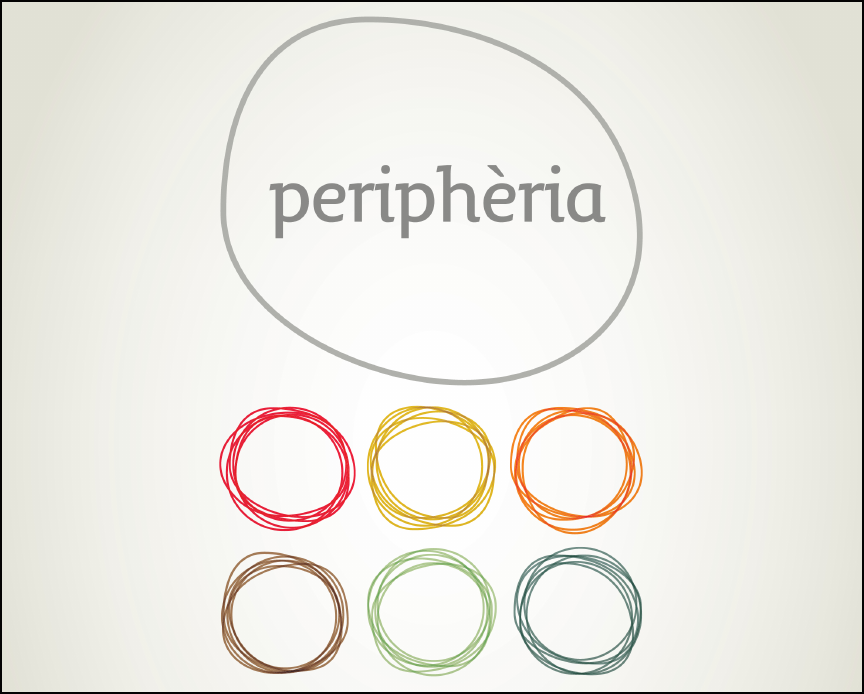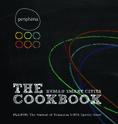inclusive processes local development technology scali ferroviari agriculture globalization architecture landscape safety & security urban regeneration social capital urbanism scenarios infrastructures urban theory urban market urban form rigenerazione urbana summer schools mega-events ecology rural areas immigration welfare central places
Periphèria | The Human Smart Cities Cookbook
Many cities are recently developing "Smart" agendas, many of which managed as a strategic selection from among a range of ICT infrastructures and equipment offered by the technology industry and/or being discovered by observing other cities. Yet is ICT infrastructure a key condition for smart innovation? Do heavily "wired" environments and services match the concrete needs of people in real urban places? Is the technology driven approach to urban innovation the best way to develop the smart agendas?
A different, more human-oriented perspective has been developed by the partners of the European Project PERIPHÈRIA (CIP ICT PSP Programme, Grant Agreement number 271015), also inspired by the Territorial Living Lab approach, which identifies citizens as the key agents of change in a "smart path" towards innovation. People in cities, from within their specific urban spaces, can be the "authors" of a new city smartness in which technologies, often considered innovation drivers, can be also seen as innovation enabling infrastructures.
In this sense, "smart" is a city that learns how to self-organize its smartness; it is aware of its rich capital of people able to shift resources back and forth from cyberspace to "cityspace"; it is aware that citizens are not only "intelligent" but also accessible and able to make their city a place with an infinite variety of choices. In such a smart city people are the engines of innovation.
The Human Smart City Cookbook is one of the outputs of the Periphèria project and has been prepared as an easy guide to a very complex task – sparking off citizen-driven digital social innovation for new public services within the city where we live and work. This is a special kind of Cookbook, since it tells you about the ingredients to buy, the tools to use, and how to mix them, but the specific end result cannot be predicted, as it will be dependent on the specific blend of people and processes that makes your city so special. This is what we call a "Human" Smart City: Human Smart cities are those where governments engage citizens by being open to be engaged by citizens, supporting the co-design of technical and social innovation processes through a peer-to-peer relationship based on reciprocal trust and collaboration. Here technology is considered as a social construct or a process enabler, not an end in itself.
Grazia Concilio
DAStU - Department of Architecture and Urban Studies
Politecnico di Milano
Email: grazia.concilio@polimi.it
CONTENTS
1. OVERVIEW
What is a Human Smart City and whydo you want to live in one?
• People in places
• Today's challenges
• Human smartness
• Addressing the challenges
• Reaping the benefits
2. MAKING YOUR CITY HUMANLY SMART
Applying the Periphèria Methodology
• The essentials
• Local citizen and business communities
• Ict actors
• Government and administration
• Working with arenas
• Arena models
• Activating arenas
• From challenges to services
• The challenges process
• The periphèria portal
• Scaling up
3. TRUE STORIES
The Periphèria pilots
• ATHENS: a square for democracy
• MALMÖ: a neighbourhood for everyone
• BREMEN: sustainable mobility in the streets
• PALMELA: a side door to the city hall
• GENOVA: safely enjoying city parks
• MILAN: a campus lab for the city

PERIPHÈRIA PROJECT PARTNERS
A 30-month Pilot B action funded by the European Commission under the CIP ICT PSP Programme, PERIPHÈRIA is carried out by a project consortium led by Alfamicro (PT) and made up of 12 partners from 5 EU Member States. The objective of PERIPHÈRIA is to deploy convergent Future Internet (FI) platforms and services for the promotion of sustainable lifestyles in and across emergent networks of “smart” peripheral cities in Europe, dynamic realities with a specific vocation for green creativity.
PERIPHÈRIA develops the Living Lab premise of shifting technology R&D out of the laboratory and into the real world in a systemic blend of technological with social innovation. It defines five archetypical “Arenas” – specific urban settings or innovation playgrounds, with defined social features and infrastructure requirements – as the spaces where co-design and service integration processes unfold.
• Alfamicro Sistema de Computadores Lda (PT)
www.alfamicro.pt
• Polymedia SpA (IT)
www.kitd.com/polymedia
• Intelligent Sensing Anywhere SA (PT)
www.isasensing.com
• Karlsruher Institut für Technologie (D)
www.kit.edu
• Archeometra s.r.l. (IT)
www.archeometra.it
• Athens Technology Center S.A. (GR)
www.atc.gr
• Politecnico di Milano (IT)
www.polimi.it
• Malmö Högskola (Malmö University) (SE)
www.mah.se
• Bremer Institut für Produktion und Logistik GmbH (D)
www.biba.uni-bremen.de
• DAEM S.A., Athens (GR)
www.daem.gr
• Comune di Genova (IT)
www.comune.genova.it
• Município Palmela (PT)
www.cm-palmela.pt
VISIT THE WEBSITE: www.peripheria.eu
Related articles:




Planum
The Journal of Urbanism
ISSN 1723-0993
owned by
Istituto Nazionale di Urbanistica
published by
Planum Association
ISSN 1723-0993 | Registered at Court of Rome 4/12/2001, num. 514/2001
Web site realized by ChannelWeb & Planum Association | Powered by BEdita 3



















